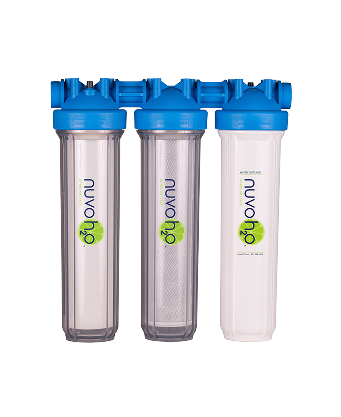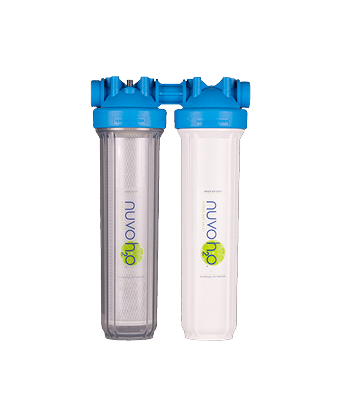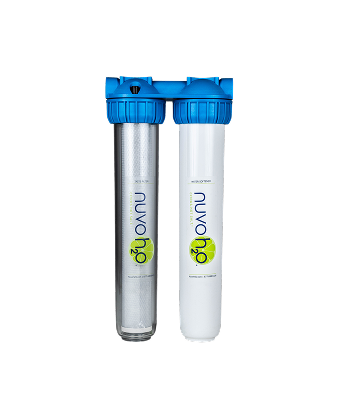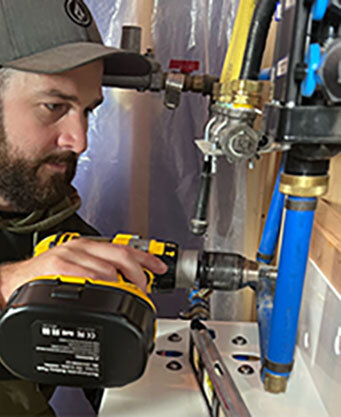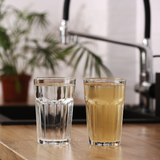
Difference Between Water Treatment, Water Filtration, and Water Softening
20th Aug 2024
When it comes to improving water quality in our homes, terms like water treatment, water filtration, and water softening often come up. While these processes may seem similar, each one addresses different issues and serves unique purposes in enhancing the quality of the water we use daily. Understanding these differences is crucial for selecting the best solution for our home water systems. In this post, our team at NuvoH2O will explore the distinctions between water treatment, water filtration, and water softening, with a focus on how our advanced chelation-based water softening technology stands out from traditional methods. Learn more and reach out to our team to find home water treatment today!

Understanding Water Treatment
Water treatment is a broad term that encompasses various processes used to improve the quality of water for specific uses, such as drinking, bathing, or industrial applications. This can involve a combination of physical, chemical, and biological methods to remove contaminants and improve the safety and taste of the water. Treatment methods vary depending on the source of the water and the types of impurities present. Some common water treatment processes include chlorination, reverse osmosis, and UV purification, each targeting different contaminants. While water treatment is crucial for ensuring water safety, it may not address issues related to hardness or specific mineral content.

The Role of Water Filtration
Water filtration is a subset of water treatment, specifically focused on removing particles, sediments, and some dissolved substances from water. Filtration typically involves passing water through a physical barrier, such as a carbon filter, ceramic filter, or membrane, which traps particles and impurities. Filters can remove a variety of contaminants, including chlorine, pesticides, heavy metals, and bacteria. However, water filtration systems do not typically remove dissolved minerals like calcium and magnesium, which are responsible for water hardness. Therefore, while filtration improves water clarity and taste, it does not address hard water issues.

What Is Water Softening?
Water softening is a process specifically designed to address the problem of hard water, which is water that contains high levels of calcium and magnesium. Hard water can cause scale buildup in pipes and appliances, reduce the effectiveness of soaps and detergents, and leave a residue on skin and hair. Traditional water softeners and whole-home water softeners typically work by using an ion exchange process, where calcium and magnesium ions are replaced with sodium or potassium ions. While effective, this method can introduce sodium into the water, which may not be desirable for everyone, especially those on low-sodium diets. Additionally, the ion exchange process removes beneficial minerals from the water, which some may prefer to retain. Our chelation-based water softening technology offers a different approach that addresses these concerns.

How Our Chelation-Based Water Softening Works
Our water softening system utilizes a natural chemical process called chelation. Unlike traditional methods that remove minerals from the water, our system uses food-grade citrate, derived from citrus fruits like lemons and limes, to neutralize the effects of calcium and magnesium. The citrate binds to the calcium carbonate in the water, converting it into calcium citrate, which does not form scale. This process is safe for plants, animals, septic systems, and human consumption, making it an eco-friendly and health-conscious choice for water softening.

The Benefits of Chelation Over Ion Exchange
Chelation offers several advantages over the ion exchange method commonly used in traditional water softeners. First, it preserves the beneficial minerals in the water, which are important for health. Second, it does not introduce sodium into the water, which can be a concern for people on low-sodium diets or those who want to avoid the environmental impact of salt discharge. Third, our chelation process is energy-efficient and waste-free, as it does not require electricity or water for regeneration cycles. This makes our system a sustainable choice for water softening.

Addressing Scale Buildup With Chelation
One of the key benefits of our chelation-based water softening system is its ability to address existing scale buildup in pipes and appliances. As the citrate in our system converts calcium carbonate into calcium citrate, it gradually breaks down and removes existing scale deposits. This not only improves the efficiency and lifespan of appliances but also enhances water flow and reduces the need for costly repairs. Over time, our system can help restore the condition of plumbing and appliances that have been damaged by hard water.

Compatibility With Different Water Conditions
Our chelation-based water softening system is designed to work effectively with most hard water conditions. However, it is important to note that our system is not recommended for use in water with a pH below 7.3. This is because the citric acid used in our system may not function optimally in more acidic water, potentially leading to less effective softening. Additionally, results may vary for water with extremely high hardness levels (over 25 grains per gallon). While our system can still provide benefits in these conditions, users may not experience the same level of softening as those with moderately hard water.

Environmental and Health Considerations
When choosing a water-softening system, it’s important to consider both environmental and health impacts. Traditional water softeners that use ion exchange require large amounts of salt, which can contribute to environmental pollution and harm aquatic ecosystems when discharged into the environment. In contrast, our chelation-based system uses a natural, non-toxic chelating agent that is safe for the environment and does not add harmful substances to the water. Additionally, by preserving beneficial minerals, our system supports overall health and well-being.

Comparing Water Softening With Water Filtration and Treatment
While water softening, filtration, and treatment all aim to improve water quality, they serve different purposes and are often used in combination for comprehensive water management. Water treatment ensures that water is safe and free from harmful contaminants, making it suitable for consumption and use. Water filtration enhances the clarity and taste of water by removing particles and impurities. Water softening specifically addresses the issue of hard water, preventing scale buildup and improving the efficiency of plumbing and appliances. Understanding the differences between these processes can help us choose the right solution for our water quality needs.
Water treatment, filtration, and softening each play a vital role in ensuring the quality of water we use in our homes. While treatment and filtration focus on removing contaminants and improving water clarity, water softening addresses the unique challenges posed by hard water. The chelation-based water softening systems from NuvoH2O offer a natural, eco-friendly alternative to traditional softeners, preserving beneficial minerals while preventing scale buildup and protecting your home’s plumbing and appliances. By understanding the differences between these processes, we can make informed decisions to improve our water quality and ensure the health and longevity of our water systems. Get in touch with our team to learn more about your water or to find the right water treatment option for you!
Contact Us

